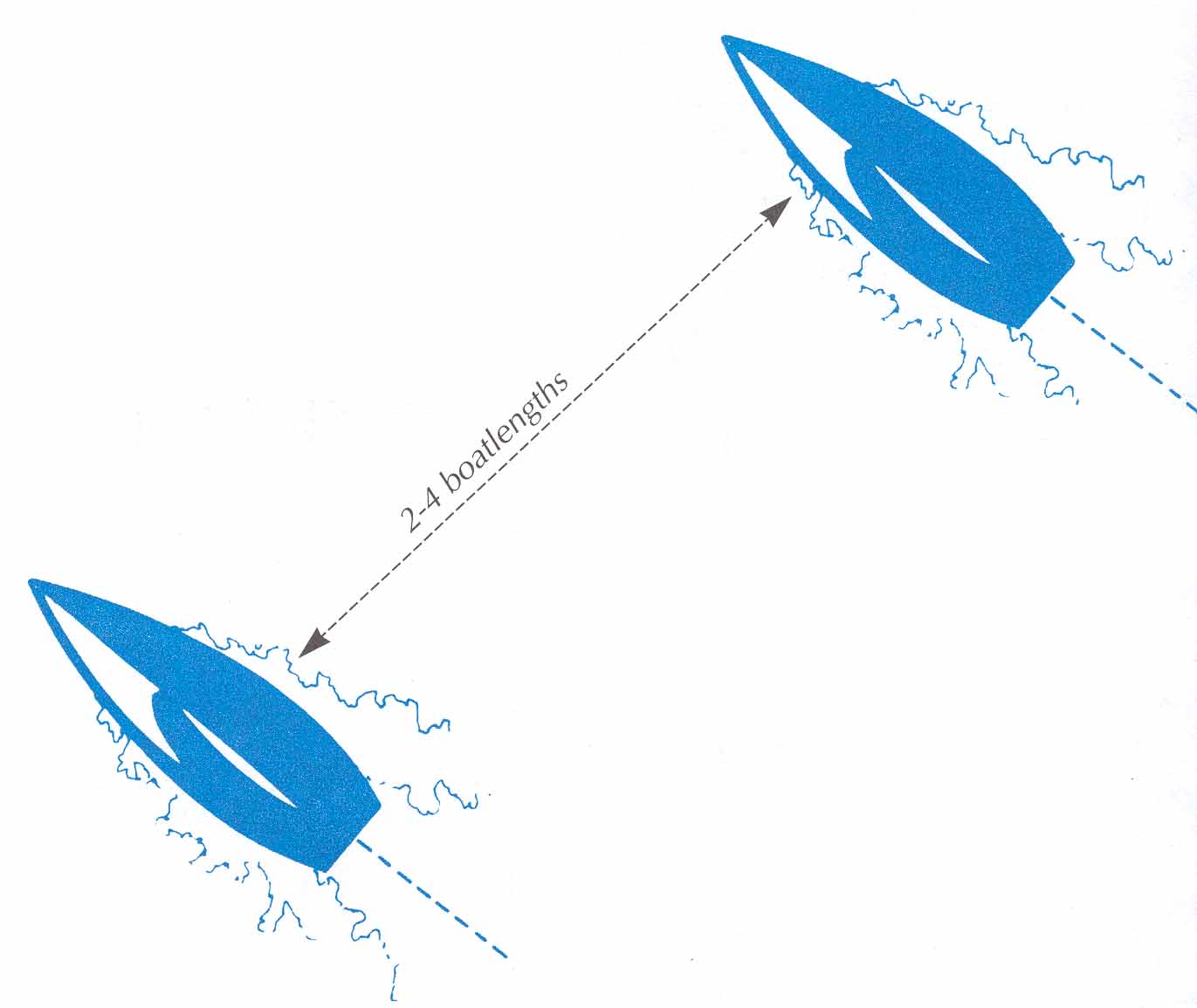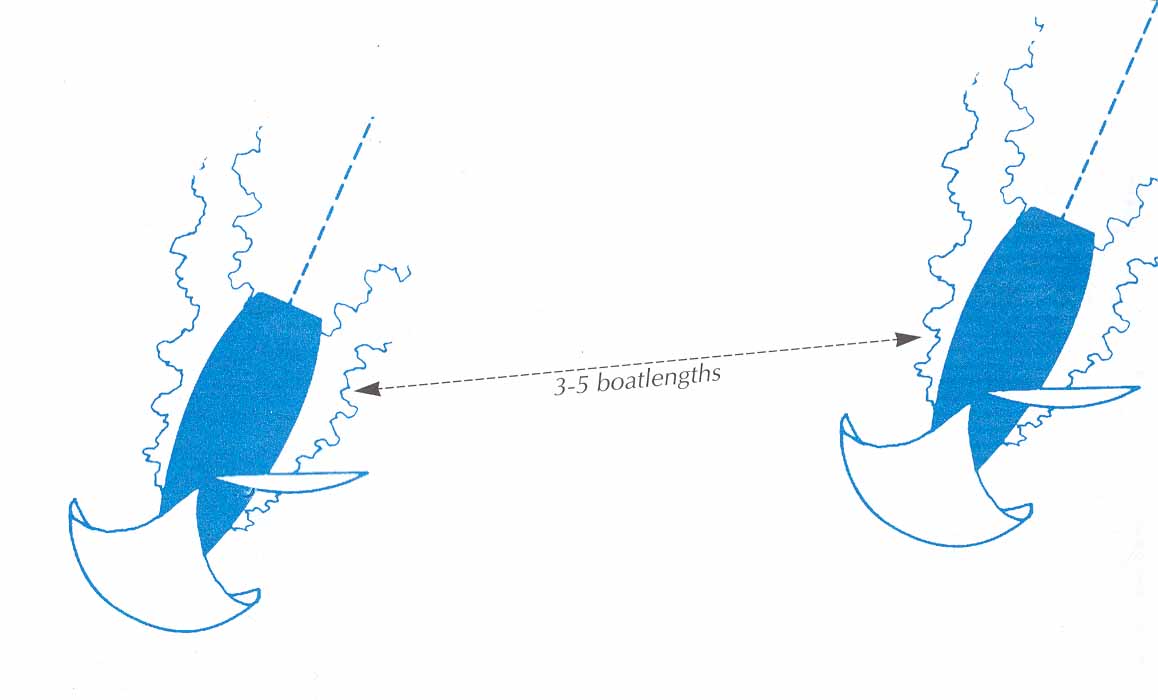
Tune Up With a Friend
By David Dellenbaugh
In sailboat racing, speed is relative. No matter how the boat feels, or what your instruments say, the final measure of boat speed is how fast you go relative to your competition. When you’re trying to get up to speed, there’s nothing better than getting a little help from another boat.
Two-boat testing is quite easy to do because all it requires is one other boat
and a joint desire to get better. You can set up special sessions for speed
testing, like we do in practicing for the America’s Cup, or you can simply hook
up with a friend half an hour before your next race. In either case, here are a
few tips on how to gather useful information in an efficient way.
The casual pre-race tune-up
Make it a habit to sail upwind (and downwind, if possible) with another boat
before evey race you sail. This will give you a chance to get your boat up to
speed in the existing conditions, start focusing on the upcoming race and
hopefully, build your confidence. It’s important to do this on all kinds of
boats, especially when: a) you weren’t too fast the last time out; or b) you are
racing with new people and need some time to work on your sail-trimming
communication.
 |
The best thing about a quick tune-up like this is that it’s easy. You don’t have
to plan ahead, and it doesn’t require much cooperation with the other boat
(beyond getting into a good testing position - see diagrams). Both boats simply
sail as fast as they can. If you aren’t going fast, change a few things until
you are happy with your performance.
I recommend picking a friendly competitor who will give you some tips if you
aren’t quite up to speed. Also, try choosing a boat that is usually the same
speed or just a bit faster than you are. That way you will have a good target to
shoot for.
The more serious speed test
If you’d like a more scientific (and more effective) approach to two-boat
testing, set up a practice session on a non-race day. Choose a tuning partner
who will be open, honest and cooperative, and who usually sails at least as fast
as you. Then follow these 9 steps:
 |
1) Before going out, sit down and identify the variable(s) you want to test. For
example, you might want to find out if it would be better to sheet your genoa a
little more inboard. Or, on a windy day, you might want to see if it’s better to
raise your centerboard and move your center of lateral resistance aft to reduce
helm.
2) Decide which of the two boats will remain constant (the “Control”) and which
one will try out the various changes (the “Test Boat”).
3) Start out by setting the boats up as evenly as possible. This includes crew
weight, general tuning, sails, trim adjustments, etc.
4) Put the two boats in the upwind test position and start sailing. Sail until
either a) one boat is obviously faster, or b) the boats get out of position
(due, for example, to a windshift). Repeat the test with the same boat to
leeward; then change sides and do at least two more tests. Continue as long as
necessary until you get consistent results.
5) When you first hook up, you are trying to get an idea of the relative base
speeds of each boat. This initial tune-up might take a few minutes or a couple
hours, depending mainly on the steadiness of the wind.
6) Ideally, you’d like to start with both boats going exactly the same speed.
Then you can change one variable and clearly see the effect. However, this is
not essential, as long as you know which boat is faster and by how much. For
example, if you know Boat A usually gains one boatlength in 5 minutes of
testing, then you can measure future changes against this standard.
7) Once you are comfortable with the base speeds, change one variable on your
Test Boat and go through the testing procedure again. To get the most definitive
results, leave the Control constant and change only one thing at a time on the
Test Boat.
 |
8) After each est, sail over to the other boat (if you’re testing upwind, head
downwind) and talk about what happened. Be honest. Continue discussing until you
both agree on which boat was faster and by how much. Be sure to consider the
effect of external variables such as windshifts.
9) Repeat this procedure, changing sides, until you get consistent results. Many
times you will get inconclusive results and you may not learn much about the
variable you are testing (or you’ll learn it is equally fast in different
settings). Discovering a change that leads to a measurable increase in speed is
one of the most exciting parts of sailing. It means you will have a little bit
more of an edge the next time you go racing!
No matter how conclusive your results are, two-boat tuning will definitely help
you become a better sailor. Besides improving your speed, it teaches you
concentration and keeps you focused on going fast whenever you’re near other
boats in a race.
Dave publishes the newsletter Speed & Smarts. For a subscription call:
800-356-2200 or go to
www.speedandsmarts.com